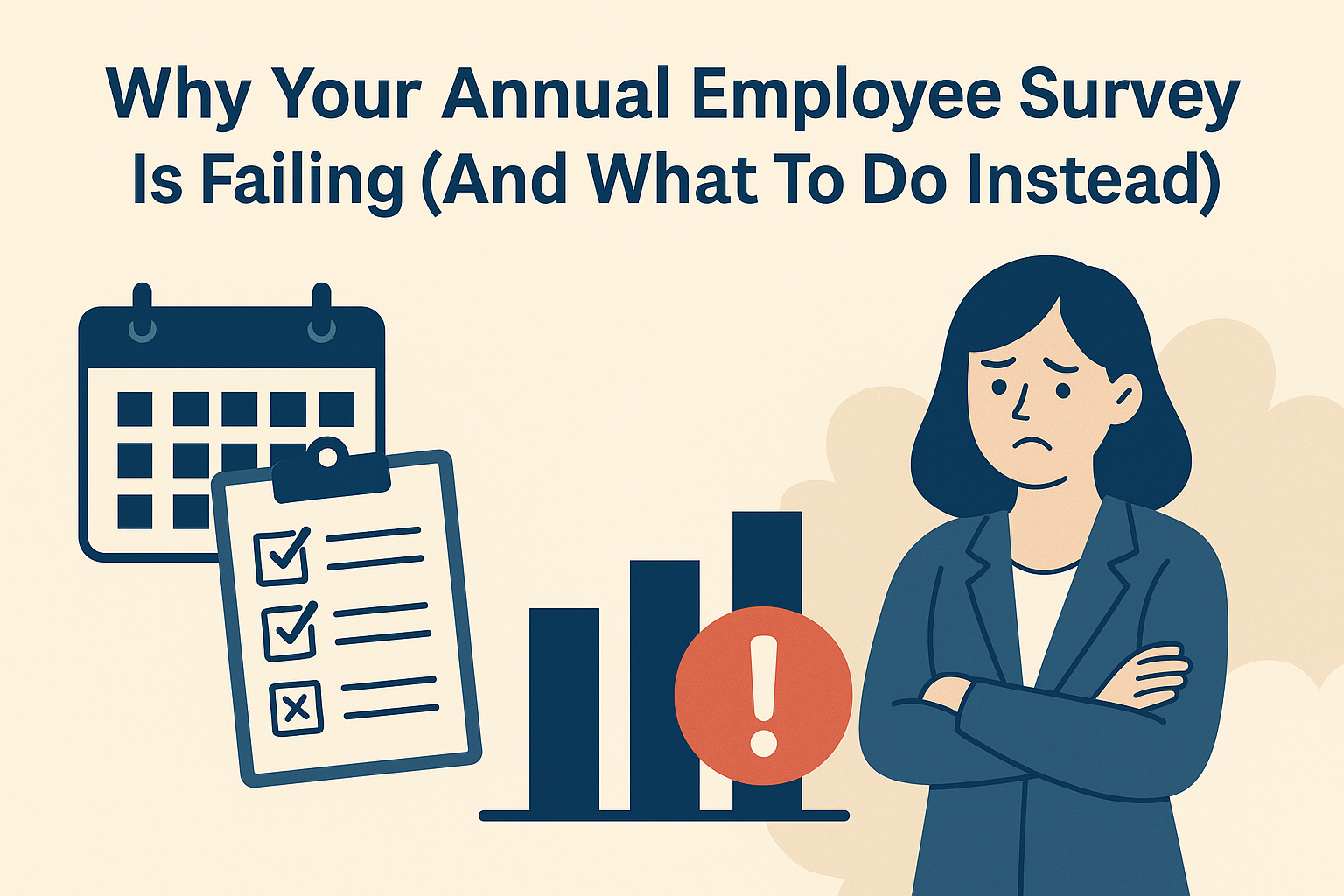Global Employee Engagement Indicator - And How To Increase It
Table of Contents
- Benchmarking Models
- How to increase survey engagement
- Conclusion
Employee engagement is crucial for the success of any organization. It directly impacts employee motivation, productivity, and retention. That's why measuring employee engagement levels is critical for any organization. Employee engagement surveys are one of the most effective tools for measuring employee engagement. They provide insights into employees' perception of their work, their relationship with their managers, and their overall satisfaction levels. However, it's important to benchmark these surveys against industry standards to ensure their effectiveness and relevance.
Benchmarking is a process that involves comparing survey results against established standards or industry best practices. It allows organizations to identify areas that require improvement and measure their progress towards achieving their goals. Several benchmarking models are available for employee engagement surveys, and each has its own set of criteria.
During World War 2, Viktor Frankl was held in concentration camps where he came up with this theory. Life in concentration camps was extremely brutal for the prisoners (images below).
It was extremely difficult, I would say impossible rather, to stay positive being a prisoner in those conditions. And yet, Viktor Frankl helped many prisoners to stay happy in those suppressing conditions. How did he do it?
Viktor Frankl developed Logotherapy to help people realize their potential and meaning in life. He helped them imagine the ideal life they would like to have and then emphasize on it all day. People started enjoying small daily chores while imagining about a happy life - a peaceful solace they would find once they would get out.
Benchmarking Models
One of the most widely used benchmarking models is the Gallup Q12 survey. This survey measures employee engagement using 12 questions that are proven to be the most effective in predicting employee performance and retention. The survey questions are based on four factors: employee needs, organizational goals, manager's role, and team performance. The results of the Gallup Q12 survey are used as a benchmark to compare against other organizations and industry standards. As of 2022, the Gallup Global Indicator shows an average global engagement rate of 21% and 19% of actively disengaged employees
The Gallup Q12 survey has been used by thousands of organizations worldwide and is widely recognized as a reliable benchmark for employee engagement. According to Gallup, organizations that score in the top quartile of the Q12 survey have significantly higher productivity, profitability, and customer loyalty compared to organizations in the bottom quartile. The Q12 survey results are used to identify areas that require improvement, and organizations can implement strategies to improve employee engagement levels.
Another popular benchmarking model is the Towers Watson Global Workforce Study. This survey measures employee engagement across several factors, including leadership effectiveness, career development opportunities, and work-life balance. The results of this survey are benchmarked against other organizations in the same industry and region.
The Towers Watson Global Workforce Study is an extensive survey that provides detailed insights into employee engagement levels. The survey is conducted annually and provides a benchmark for organizations to compare their employee engagement levels against industry standards.
Unofficial yet credible benchmarking source
Apart from these benchmarking models, there are several other benchmarks that can be used to measure employee engagement, such as the Best Companies to Work For survey by Fortune magazine. This survey ranks companies based on their employee satisfaction levels and is widely recognized as a reliable benchmark for employee engagement.
Credible sources are essential to support the findings on benchmarking employee engagement surveys. The Society for Human Resource Management (SHRM) is a professional association for human resource professionals that provides resources and tools for conducting employee engagement surveys. SHRM's website has several articles and guides on employee engagement surveys, including benchmarking against industry standards.
Another credible source is the Corporate Leadership Council (CLC), which is a division of Gartner. The CLC provides research and advisory services on talent management and has conducted extensive research on employee engagement surveys. They have published several reports on benchmarking employee engagement surveys, including the Employee Engagement Survey Benchmark Report.
The Employee Engagement Survey Benchmark Report provides insights into best practices for conducting employee engagement surveys and benchmarks survey results against industry standards. The report highlights the importance of using benchmarking to identify areas that require improvement and implement strategies to boost employee engagement levels.

How to increase survey engagement
There are a few ways to increase the engagement that has worked very well in other organizations:
- Make it a part of the organization's KRAs
- Incentivize employees for a successful participation
- Share the results of the survey along with 'Next Action Steps' plan
- Acknowledge people's response. Humans want to feel heard
- Be receptive of both their positive and negative feedbacks
- Care. It all comes down to being empathetic towards people challenges and allowing them to speak about it. You can refer to this article on unique ways to show care towards your employees
Conclusion
Management guru Peter Drucker once said, “[only] what gets measured, gets managed.” As we could clearly document, this applies in particular to the challenges firms face in measuring their employees' experience and its impact on the firm's performance. Keeping this in mind, measuring the response rate of the survey becomes extremely critical to understand how the organization performs and where it's heading.
Once you are able to gather a good response rate from your employees, you will have more visibility of the challenges that your employees are facing, which in turn results in you resolving those challenges and contributing towards a better workplace for each and everyone.



